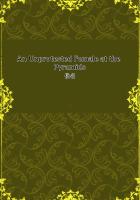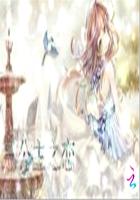M.ViolletleDuc has worked his will upon it,put it into perfect order,revived the fortifications in every detail.I do not pretend to judge the performance,carried out on a scale and in a spirit which really impose themselves on the imagination.Few architects have had such a chance,and M.ViolletleDuc must have been the envy of the whole restoring fraternity.The image of a more crumbling Carcassonne rises in the mind,and there is no doubt that forty years ago the place was more affecting.On the other hand,as we see it today,it is a wonderful evocation;and if there is a great deal of new in the old,there is plenty of old in the new.The repaired crenellations,the inserted patches,of the walls of the outer circle sufficiently express this commixture.My walk brought me into full view of the Pyrenees,which,now that the sun had begun to sink and the shadows to grow long,had a wonderful violet glow.The platform at the base of the walls has a greater width on this side,and it made the scene more complete.Two or three old crones had crawled out of the Porte Narbonnaise,to examine the advancing visitor;and a very ancient peasant,lying there with his back against a tower,was tending half a dozen lean sheep.A poor man in a very old blouse,crippled and with crutches lying beside him,had been brought out and placed on a stool,where he enjoyed the afternoon as best he might.He looked so ill and so patient that I spoke to him;found that his legs were paralyzed and he was quite helpless.He had formerly been seven years in the army,and had made the campaign of Mexico with Bazaine.Born in the old Cite,he had come back there to end his days.It seemed strange,as he sat there,with those romantic walls behind him and the great picture of the Pyrenees in front,to think that he had been across the seas to the faraway new world,had made part of a famous expedition,and was now a cripple at the gate of the mediaeval city where he had played as a child.All this struck me as a great deal of history for so modest a figure,a poor little figure that could only just unclose its palm for a small silver coin.
He was not the only acquaintance I made at Carcassonne.I had not pursued my circuit of the walls much further when I encountered a person of quite another type,of whom I asked some question which had just then presented,itself,and who proved to be the very genius of the spot.He was a sociable son of the villebasse,a gentleman,and,as I afterwards learned,an employe at the prefecture,a person,in short,much esteemed at Carcassonne.(I may say all this,as he will never read these pages.)He had been ill for a month,and in the company of his little dog was taking his first airing;in his own phrase he was amoureuxfou de la Cite,he could lose no time in coming back to it.He talked of it,indeed,as a lover,and,giving me for half an hour the advantage of his company,showed me all the points of the place.(Ispeak here always of the outer enceinte;you penetrate to the inner which is the specialty of Carcassonne,and the great curiosity only by application at the lodge of the regular custodian,a remarkable functionary,who,half an hour later,when I had been introduced to him by my friend the amateur,marched me over the fortifications with a tremendous accompaniment of dates and technical terms.)My companion pointed out to me in particular the traces of different periods in the structure of the walls.There is a portentous amount of history embedded in them,beginning with Romans and Visigoths;here and there are marks of old breaches,hastily repaired.We passed into the town,into that part of it not included in the citadel.It is the queerest and most fragmentary little place in the world,as everything save the fortifications is being suffered to crumble away,in order that the spirit of M.ViolletleDuc alone may pervade it,and it may subsist simply as a magnificent shell.As the leases of the wretched little houses fall in,the ground is cleared of them;and a mumbling old woman approached me in the course of my circuit,inviting me to condole with her on the disappearance of so many of the hovels which in the last few hundred years (since the collapse of Carcassonne as a stronghold)had attached themselves to the base of the walls,in the space between the two circles.These habitations,constructed of materials taken from the ruins,nestled there snugly enough.This intermediate space had therefore become a kind of street,which has crumbled in turn,as the fortress has grown up again.There are other streets,beside,very diminutive and vague,where you pick your way over heaps of rubbish and become conscious of unexpected faces looking at you out of windows as detached as the cherubic heads.
The most definite thing in the place was the little cafe,where.the waiters,I think,must be the ghosts of the old Visigoths;the most definite,that is,after the little chateau and the little cathedral.Everything in the Cite is little;you can walk round the walls in twenty minutes.On the drawbridge of the chateau,which,with a picturesque old face,flanking towers,and a dry moat,is today simply a bare caserne,lounged half a dozen soldiers,unusually small.Nothing could be more odd than to see these objects enclosed in a receptacle which has much of the appearance of an enormous toy.The Cite and its population vaguely reminded me of an immense Noah's ark.















